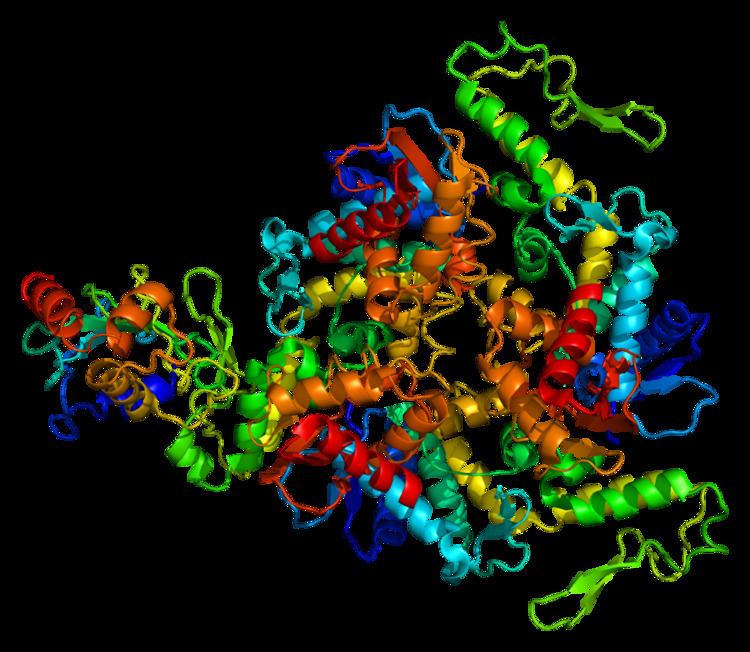Entrez 7332 | Ensembl ENSG00000185651 | |
 | ||
External IDs MGI: 109240 HomoloGene: 43226 GeneCards: UBE2L3 | ||
Ubiquitin-conjugating enzyme E2 L3 (UBE2L3), also called UBCH7, is a protein that in humans is encoded by the UBE2L3 gene. As an E2 enzyme, UBE2L3 participates in ubiquitination to target proteins for degradation. The role of UBE2L3 in the ubiquitination of the NF-κB precursor implicated it in various major autoimmune diseases, including rheumatoid arthritis (RA), celiac disease, Crohn's disease(CD), and systemic lupus erythematosus.
Contents
Gene
The UBE2L3 gene is located at chromosome 22q11.21, consisting of 6 exons.Two alternatively spliced transcript variants encoding distinct isoforms have been found for this gene.
Protein
There are 38 E2 enzymes in humans. They all contain a conserved catalytic core domain that interacts with E1 and E3 and many E2s possess additional N- and/or C-terminal protein sequences. In contrast to other E2s, residues necessary for lysine reactivity are absent: the D87 and D117 residues (in UBCH5C numbering) are replaced by Pro and His residues.
Function
The modification of proteins with ubiquitin is an important cellular mechanism for targeting abnormal or short-lived proteins for degradation. Ubiquitination involves at least three classes of enzymes: ubiquitin-activating enzymes (E1s), ubiquitin-conjugating enzymes (E2s) and ubiquitin-protein ligases (E3s). E2s play a key role in the whole ubiquitin (Ub) transfer pathway and are responsible for Ub cellular signaling. Unlike many E2s that transfer Ub with RINGs, UBE2L3 has E3-independent reactivity with lysine. This enzyme is demonstrated to participate in the ubiquitination of p53, c-Fos, and the NF-κB precursor p105 in vitro. UBE2L3 is primarily known for its role in the cell cycle. Specifically, UBE2L3 manages cell cycle regulatory protein levels via the ubiquitin proteolytic pathway (UPP) during the G1/S transition and during the actual S phase.
Clinical significance
Through genome-wide association studies (GWAS), UBE2L3 has been associated with several autoimmune diseases, including RA, celiac disease, CD, and SLE via the ubiquitination of the NK-κB precursor. This association was observed in European, Asian, and African-American populations. UBE2L3 has been linked to natural killer cell cytotoxic function, and high UBE2L3 levels had contributed to clearing chronic HBV infection. UBE2L3 controls the protein stability of 53BP1 and determines the DNA double-strand break repair choice. Loss of UBE2L3 stabilizes 53BP1 and force cells to choose NHEJ to repair DNA double-strand break. Repair by NHEJ leads to radial chromosomes and cell death. UBE2L3 depletion may become a novel strategy in enhancing the effect of anticancer therapies. The haplotype of UBE2L3 gene is also reported associated with Hashimoto's thyroiditis in a Chinese Han population.(27094594)
Interactions
UBE2L3 has been shown to interact with:
